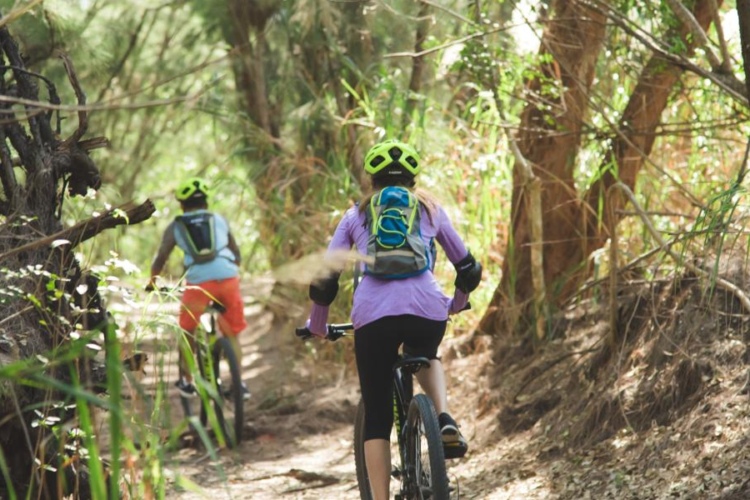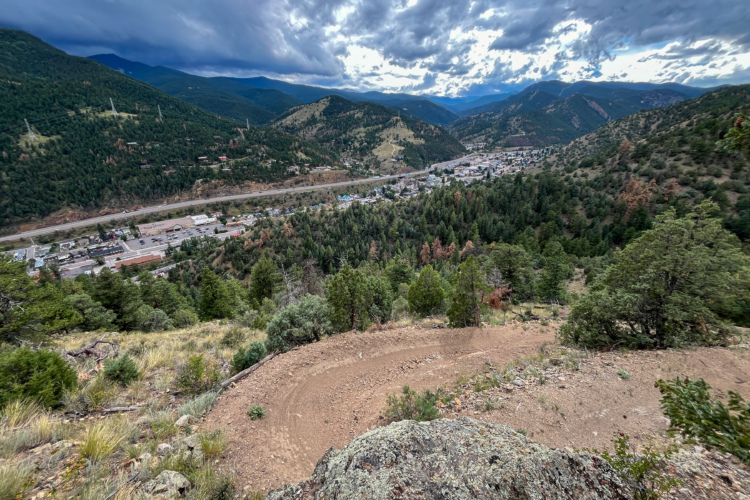
There’s a common perception when it comes to updates in the mountain bike industry. As the saying goes, “they keep changing stuff so they can sell more bikes.” Is it true? Well, it’s true with any industry.
The perfect example is the iPhone. Most of the changes each year are slight. The camera has more megapixels or the screen has better resolution. One year, they decided to move away from the smaller sized phones, then they brought them back, dubbed them “mini,” and fans raved.
So, sure. The updates are part of a vicious product and consumer cycle, but are we victims or beneficiaries? Maybe a bit of both. Update cycles create demand, because who doesn’t want the latest and greatest, but while some updates are slight, they tend to point technological evolution in the right direction.
Early in 2022, we recapped the trends we saw in 2021: mixed wheel bikes, high pivots, and more electronics. In 2020, the trends we saw were flex stays, lightweight e-bikes, and investment in domestic manufacturing and sustainability.
We saw more of these trends in 2022, but we’re also seeing some others develop. Here’s a recap of the most recent tech trends we’ve seen implemented in new bikes this past year.
Downtube trunks

It all started with the SWAT box on Specialized bikes in 2015 and now the integrated storage compartments in down tubes is getting more commonplace in other brands’ bikes. It’s really a great idea — the downtube is usually the widest tube on the bike and the inside is hollow… so why not shove some stuff in there?
Last year, Orbea debuted a new Rallon and the latest version had a storage compartment. What’s Orbea’s clever name? The LOCKR, and it comes with two sealed bags and space for a tube, tire levers, and CO2 cartridges. This LOCKR doesn’t have space for text books though some leave ’em at home.
Santa Cruz released their V2 Megatower this spring and it was the first bike in their lineup to have a storage compartment in the down tube. Then Santa Cruz built both the new Hightower and Nomad with their new Glovebox.

Trek also implemented the storage stash on their new Fuel EX which we’ve been riding, but they have been carving out frame storage in their bikes for a few years now.
Whatever name different brands call it, the feature makes a lot of sense if brands have the ability to make it. We’re fans of riding with little weight on our backs and these downtube trunks make it more feasible.
Proportional chainstays

The average reach on mountain bikes has grown substantially in the past five years. When people said “lower, longer, slacker,” the longer they referenced was usually reach, if not wheelbase. In either case, the front triangle of mountain bikes have grown, and the reaches are size-specific, while rear triangles have largely been one-size-fits-all.
Many brands began making size-specific chainstays in recent years. The current generation Norco Optic was an early model to see size-specific chainstays which grow by 5mm on each size, and the latest Cannondale Jekyll, released last summer, came with “Proportional Response Geometry.” Cannondale says the design keeps the “rider centered between the wheels.”
This year, we saw Santa Cruz use size-specific chainstays on the new Tallboy, Megatower, and Hightower, along with size-specific seat tube angles for taller riders.

Atherton Bikes’ newly launched trail bike, the AM 130, comes in a plethora of sizes each size-specific chainstays that range from 430mm to 436mm.
Even though quite a few bike-makers made the switch to proportional chainstays there are still a lot using the same size across sizes. We anticipate seeing more make the change as the trend goes.
Larger diameter seat tubes

In January of this year I wrote a piece on why manufacturers like Bike Yoke are calling for the adoption of 34.9mm seat tubes. In short, geometry has changed in recent years and standover height has gotten lower, resulting in the need for longer droppers. But when you lengthen a tube, to keep the stiffness, you must also widen it.
Bike Yoke said they have found their limits in length on 30.9mm and 31.6mm dropper posts and the 34.9mm seat tube gives them much more room to make a post more reliable and stiff. They also said they had a number of brands who inquired with them about converting to 34.9 seat tubes around the time we spoke to them for the story.
And, this year, we have seen more brands using the larger tube. Norco’s latest aluminum Fluid switched to the larger tube, ahead of the similar Optic, which has a carbon frame and is using a 31.6mm tube. With the aluminum Sight and the latest Shore freeride using a 34.9 it seems like Norco would also convert their bikes to a 34.9 on the next update cycle too.
Trek has been using the 34.9 seat tube on some of their bikes for a while, but they switched the Fuel EX to the 34.9 on this new generation for “longer, more robust dropper posts.”
Devinci’s latest e-bikes, the E-Spartan and E-Troy, have also switched to 34.9mm seat tubes joining the Troy, but not the Spartan.
Shorter cranksets

Last year, we had a contributor pitch an article about shorter cranksets for mountain biking and the merit behind them. The piece became one of our most popular articles of 2021, and the timing couldn’t have been better. More media outlets also spoke about shorter cranksets and we’ve seen a lot of brands speccing builds with size-specific cranks and with shorter, sub-170mm cranks on smaller bikes.
E-bikes have a greater potential for shorter crank arms though since riders can keep pedaling and keep more momentum over technical sections. That’s exactly why Hope designed their E-bike crankset with 155mm and 165mm lengths. Though Hope has had these cranks on the market for a few years, they’re believers in short cranks for motorless bikes too, and released their 155mm Evo cranks in September.
Hope stated the benefits of shorter cranks in a release: The rider’s body weight is closer to the center of the bike, they accelerate more quickly, and they are lighter and stiffer.
Think 155mm is short? Appleman Bicycles’ new 2XR crankset are available in 10mm increments from 135mm to 175mm. Appleman found that shorter cranks weren’t just beneficial to performance though, but to biomechanics.
“After years of knee pain, Matt Appleman found short cranks vital to bike fit and has encouraged all his custom frame customers to ride appropriately sized cranks for the absolute best bike possible,” says a paragraph on the Appleman website.
They include a rudimentary way to find your ideal crank length: take your inseam, multiply it by .20 and it should give you a rough idea. For my 32″ inseam, the equation gives me 162.5mm, which is certainly shorter than anything I’ve tried, though I remember loving the way this Canfield Tilt climbed with 165mm cranks.









